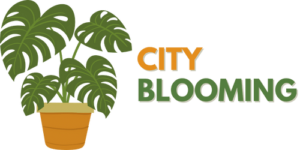The smart Trick of City Blooming That Nobody is Discussing
Table of ContentsUnknown Facts About City BloomingThe Of City BloomingAll About City BloomingNot known Facts About City BloomingOur City Blooming Diaries
Fascinated in growing food offer for sale in the City of Chicago? Thinking about beginning a community garden? Changes to the Chicago Zoning Ordinance allow agricultural uses like area yards and city ranches in numerous parts of the city. Below is a list of often asked concerns concerning the policies and policies that farmers need to take into consideration when planning a city agriculture job.
The zoning amendment does not change any kind of various other codes handling composting, structure authorizations, buying or renting City possessed home, organization licenses or ecological contamination. There are existing codes that regulate these issues and they remain in full impact and may be appropriate to your job. Area yards are typically owned or managed by public entities, public organizations or community-based organizations and preserved by volunteers.
Urban farms grow food that is planned to be marketed, either on a not-for-profit or for-profit basis. Due to their commercial function, metropolitan ranches require a business certificate.
Some Ideas on City Blooming You Should Know
The quantity of compost material can not exceed 25 cubic backyards at any provided time according to the requirements in 7-28-715 of the City's Municipal Code. Because the dirt at many brand-new garden sites requires modifying, garden compost, dirt, wood chips, or various other products can be obtained to construct or improve the growing space.

If a building authorization is needed after that the hoophouse will be thought about an accessory structure. You can discover more concerning the building license needs by speaking to the Department of Structures. The 25,000-square-foot dimension limit is planned to avoid a single community yard from dominating a given block or diminishing the block's existing residential or business personality.
The limitation does not apply to yards situated in Public Open Space (POS) districts. Can there be more than one area yard that is 25,000 square feet on a solitary block? Secure fencing is not needed, nevertheless, gardens that have large auto parking locations may be called for to mount fence or other landscape design functions.
The Only Guide to City Blooming
B1 & B2 areas call for that all industrial use tasks be performed indoors. Is fence required for city ranches? Fencings might be called for, along with landscape design and testing, for specific parking areas and outside job or storage locations depending on place and the particular activity taking location.
Urban farms need building licenses and zoning approvals prior to building (landscaping). Other forms of city testimonial might be needed depending on particular frameworks, tasks, size, landscape design, licensing, public heath and stormwater administration issues.
The site Division of Business Matters and Customer Security can assist identify the details type of organization certificate that's needed. Off street car park is needed for most industrial tasks in Chicago. The called for number of auto parking rooms is based on the number of workers working on website and not the square video footage of the expanding area.
City Blooming for Dummies

Yes. An urban ranch can offer compost product produced on site, however, the operation should follow the policies in 7-28-715 of the Chicago Municipal Code. Yes. Aquaponic systems are enabled inside your home on metropolitan ranches in several zoning areas. However, a zoning testimonial and structure license is needed in order to install structures or systems and a business permit is required as explained above.
Up to 5 hives or colonies of honey bees might be maintained as an accessory use. Nevertheless, beekeepers must register with the Illinois Division of Agriculture. For even more info concerning the recommended zoning modification you may speak to the Department of Real Estate and Economic Development, Bureau of Planning and Zoning at 312.744.8563.
Farming in cities and urban locations A city ranch in Chicago. Urban farming describes various practices of growing. https://pxhere.com/en/photographer/4293794, handling, and distributing food in metropolitan areas. The term also relates to the location tasks of animal husbandry, aquaculture, beekeeping, and cultivation in a metropolitan context. Urban farming is distinguished from peri-urban farming, which happens in backwoods at the side of suburban areas.
City Blooming Fundamentals Explained
, who seek to form social networks founded on a shared principles of nature and neighborhood holism. These networks can develop by means of formal institutional support, coming to be integrated right into neighborhood community preparation as a "transition community" activity for lasting urban growth.
Some of the initial evidence of metropolitan farming comes from Mesopotamia.